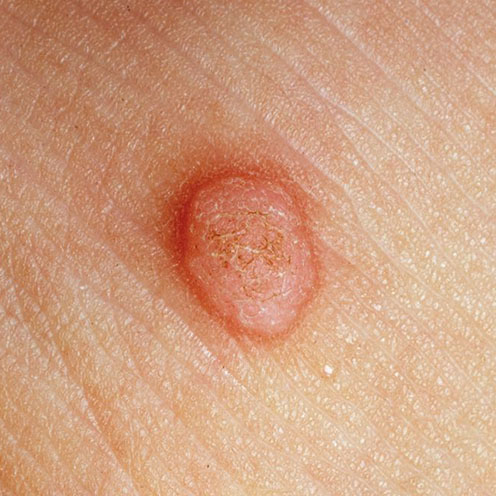Warts
Home • Dermatology • Common Skin Conditions • WartsAbout
Warts are non-cancerous skin growths caused by viruses in the human papillomavirus (HPV) family. They typically manifest as rough bumps on the skin and can appear on any body part.
AboutSymptoms
Warts come in various forms, depending on their location on the body:
- Common warts: Usually appear on the hands, are grainy in texture, and have rounded tops. They may be pink or white in color.
- Plantar warts: Found on the soles of the feet and can be painful. They often appear as hard patches of skin with dark specks.
- Flat warts: Smaller and smoother than other types, these tend to appear on the face, legs or arms.
- Filiform warts: Characterized by their long, thin appearance, they can grow on the face, usually around the mouth, nose, or beard area.
Causes
Warts are primarily spread through direct contact with HPV, which can enter the body through cuts or breaks on the skin. These viruses are contagious and can be spread through contact with towels or other personal items that have been used by an infected person.
CausesTreatments
- Topical Treatments
-
- Salicylic acid: This is one of the most common and effective treatments. It works by peeling away the wart layer by layer. It’s available in various forms such as gels, pads, and drops.
- Imiquimod: A prescription cream that stimulates the immune system to fight the virus that causes warts.
- wartPEEL
- Cryotherapy
-
- Liquid nitrogen: This treatment involves freezing the wart with liquid nitrogen to cause a blister under and around the wart. The dead tissue sloughs off within a week or so. It may require multiple sessions and is done by a dermatologist.
- Minor Surgical Procedures
-
- Electrosurgery and curettage: Electrosurgery burns the wart with an electric charge, after which it is scraped off with a curette.
- Laser treatment: Pulsed-dye laser treatment cauterizes the blood vessels within the wart, effectively “starving” it of nutrients needed to survive. This method may be chosen for difficult-to-treat warts.
- Chemical Treatments
-
- Cantharidin: A dermatologist applies this chemical to the wart, causing a blister under and around the wart. The dead tissue sloughs off within a week or so.
- Bleomycin: Injected into the wart to kill the virus, this is typically reserved for tough cases due to potential side effects.
- Immunotherapy
-
- Using an immune response modifier: Diphencyprone (DPCP) or squaric acid dibutylester (SADBE) can be applied to the wart to trigger an allergic reaction, which may help the immune system clear the wart.
- Candida antigen
